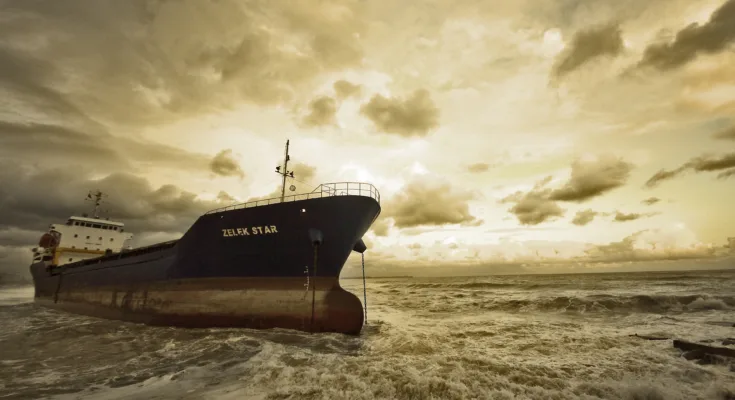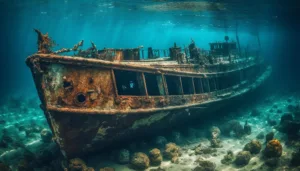Titanic dubbed “unsinkable” was a passenger liner, the British which sank as it placed in its first trip. Its story goes on to have all of the people hearts heart wrenched and minds pondering, a reflection of human gullibility.
Construction and Design
The Titanic was erected by the Harland and Wolff shipyard located in Belfast, Northern Ireland; a marvel of modern engineering. It featured modern facilities and led in the luxury of interiors that both revered especially among first passengers.
Maiden Voyage
New York city, leaving on April 10, 1912 from Southampton( England), the Titanic sail-off to this marvelous voyage. The passenger and crew on board numbered over 2,200, made up of aristocrats of various nationalities; including Germans, immigrants from foreign countries such as Poland and Russia, the common men who took this voyage so that they could realize their dream in America.
Departure and Passengers
Whilst the departure of the Titanic could be argued as another spectacle, whereby all had gathered to witness what was regarded as the grandeur of the largest ship afloat at that time. Prominent people from the era travelled on board these ships, making the travel exclusive as well dignified
Voyage Details
The Titanic then passed through varying degrees of situations found at parts of the Atlantic Ocean, such as favorable conditions for sailing and cold waters. However, in spite of a forecasted presence by icebergs around the vessel’s location within the area, it traveled furiously at full speed escaping any thought of carrying out a previous stop over the ocean trapped by atomic beams that slowed its movement and stemmed to continue its voyage.
Collision with the Iceberg
As of the night of April 14, 1912, Titanic hit an iceberg in the North Atlantic and what was left out is a tragedy. The result of the impact destroyed dozens of compartments on board along the starboard side that damaged far beyond the repairment option.
Timeline of Events
At the impact, a wave of shocks was sent through the ship and this prompted everyone on board to react rapidly and try to find emergency exits. Despite such attempts to limit flood harrows, the devastation just seemed to be enormous at that point; consequently the Titanic was thrown in an absolutely desperate fight for survival.
Immediate Aftermath
Panic and chaos spread across the ship after the crash. The passengers suddenly woke up to the reality of their situation as lifeboats were hurriedly arranged and launched amid scenes of darkness, panic, and desperation.

Sinking of the Titanic
As the ship began to list heavily one side, it became clear that the fate of Titanic was decided. In the absence of adequate lifeboats for all everybody onboard, a macabre scene ensued as passengers were left with life or death.
Evacuation Procedures
The evacuation of the Titanic was tainted by confusion and misunderstanding, which worsened an already hopeless predicament. Despite attempts to give women and children preference, many lifeboats were lowered partly loaded with the passengers stranded onboard.
Lifeboats and Rescue Efforts
As the Titanic gradually sank into its watery grave, the voices of those that were left behind reverberated across the darkness of night. Rescue ships, amongst which was RMS Carpathia, received distress signals and raced on the site to rescue survivors from freezing waters in a fight against death.
Legacy and Impact
Public outrage and grief after the sinking of the Titanic were widespread across the world. After a disaster, investigations were carried out to establish the causes and responsible individuals, which brought about overhaul changes in maritime safety rules.
Investigations and Inquiries
The sinking of the Titanic led to a sequence of inquiries and investigations into finding out the truth behind this tragedy. All aspects of the disaster were criticized, from poor safety measures up to the crew and passenger actions.
Memorials and Remembrance
In the subsequent years, Titanic assumed the role of a human folly and hope symbolized in hundreds of books, films and monuments. The morbid tunes of “Nearer, My God, to Thee” and the endless standing vigils at the site of the Titanic sinking are some examples which help preserve its memory.
Conclusion
Titanic inspires the sense of vulnerability in people, in spite of their biggest efforts, and underlines a strong survival instinct. As we reminisce on the tragic events of that darkest night, may we pay tribute to those that were laid to rest and seek inspiration in their enduring spirit.
FAQs
Q: What led to the sinking of Titanic?
A: The sinking of the Titanic was mainly caused by a number for reasons, namely the high speed of this ship in icy waters, poor lookout procedures and insufficient lifeboats.
Q: What was the number of survivors after the Titanic disaster?
A: Out of the 2,200 passengers and crew onboard the Titanic, only about 700 survived making it one of the deadliest maritime tragedies in history.
Q: Was the Titanic unsinkable?
A: The Titanic, even referred to as ‘unsinkable’ by its designers and constructors proved susceptible to the forces of nature when it hit an iceberg addressing one of its maiden voyages.
Q: Were there any signs prior to the crash?
A: The Titanic’s crew received several pieces of information about icebergs in the area before the disaster, but they sometimes ignored this warning or did not react quickly enough.
Q: What did we learn from the sinking of the Titanic?
A: The loss of the Titanic resulted in many changes to improve maritime safety laws which saw improved ship designs, navigation procedures and life-saving equipment. These lessons remain integral to modern maritime practices and safety standards.





